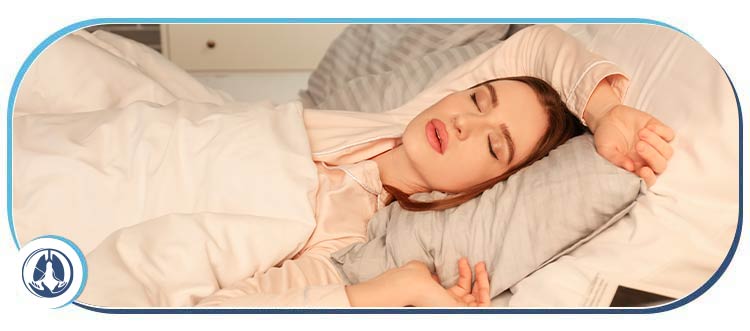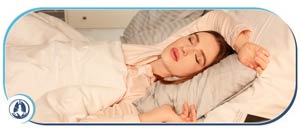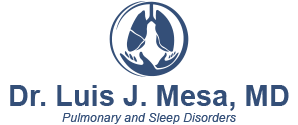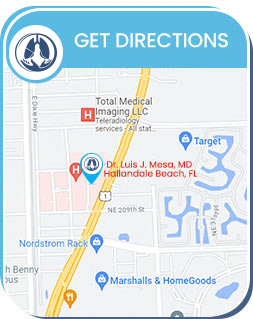Obstructive Sleep Apnea (OSA) Treatment Specialist in Hallandale Beach, FL
Obstructive sleep apnea is seen in all age groups, but the frequency increases with age and obesity. Symptoms include snoring and daytime sleepiness. Board-certified Dr. Luis J. Mesa, MD, can help with OSA in several different ways, including sleep studies, or other diagnostic tests to determine if any medical conditions are contributing to Obstructive Sleep Apnea (OSA). Get help from professionals to avoid serious consequences. For more information, contact us or schedule an appointment online! We are conveniently located at 1250 E Hallandale Beach Blvd Suite 205 A, Hallandale Beach, FL 33009.


Table of Contents:
What causes obstructive sleep apnea?
What is the difference between sleep apnea and obstructive sleep apnea?
Can obstructive sleep apnea be cured?
How does Dr. Luis J. Mesa, MD help with obstructive sleep apnea (OSA)?
Obstructive sleep apnea (OSA) is a sleep disorder with potentially serious consequences. While some symptoms of OSA may be minor, the condition can lead to an increased risk of various cardiovascular issues, such as coronary artery disease (CAD), stroke, or heart failure, in addition to other complications. As such, it is important to seek treatment if you are dealing with OSA or are concerned that you may have OSA. At Dr. Luis J. Mesa, MD, we would be pleased to provide tests or treatment for OSA to you.
The physical cause of obstructive sleep apnea is when the muscles in the back of your throat that support an open airway become too relaxed. When those muscles relax, they cause your airway to narrow or close whenever you inhale, which can prevent you from breathing sufficiently for 10 seconds or more. When this happens, it is called an apnea or hypopnea event, depending on whether the event causes shallow breathing (hypopnea) or temporary cessation of breathing (apnea). According to the apnea-hypopnea index (AHI), if individual experiences more than five apneas or hypopneas per hour, they are diagnosed with sleep apnea, according to the apnea-hypopnea index (AHI).
With that in mind, there are several possible causes of obstructive sleep apnea, as various factors have shown strong correlations with an increased presence of OSA, including the following:
• Abnormalities in the jaw and upper airway
• Age
• Excess weight or obesity
• Frequent nasal congestion
• Genetics
• Large neck size, tongue, or tonsils
• Smoking
While sleep apnea is often used to refer to obstructive sleep apnea, they are not the same condition, as there are two different types of sleep apnea. In addition to obstructive sleep apnea, another type of sleep apnea is known as central sleep apnea (CSA), which is far less common than OSA. The difference between the two types of sleep apnea is that CSA is a neurological disorder, meaning that the problem lies within the central nervous system, while OSA is more of a mechanical problem dealing with the actual airway itself.
Since obstructive sleep apnea occurs due to anatomical characteristics in the person’s airway, the question of whether OSA can be cured is not very straightforward. The only way to permanently cure OSA is through a tracheostomy, which is a highly invasive surgery that requires a special tube or plugs for patients to speak normally after the surgery. As such, it is only used in extremely severe cases that cannot be treated via less invasive and life-altering methods.
With that in mind, the best option for most individuals dealing with obstructive sleep apnea is through oral appliances or continuous positive airway pressure (CPAP) therapy, which involves the use of a CPAP machine, hose, mask, and nosepiece to deliver constant and steady air pressure through your nose to keep your airways open. Such treatments may not cure OSA, but they can provide effective relief and improvement of OSA symptoms.
At Dr. Luis J. Mesa, MD, we can help with OSA in several different ways, including sleep studies, or other diagnostic tests to determine if any comorbid medical conditions are contributing to OSA, and prescribed sleep equipment, such as various oral appliances or CPAP therapy. Dr. Mesa is board-certified and has over ten years of experience in sleep medicine.
For more information about obstructive sleep apnea or an appointment with Dr. Luis J. Mesa, MD, in Hallandale Beach, FL, please give us a call or conveniently schedule an appointment on our website. You can find our clinic at 1250 E Hallandale Beach Blvd Suite 205 A, Hallandale Beach, FL 33009. We serve patients from Hallandale Beach FL, Aventura FL, Hollywood FL, Golden Glades FL, Miramar FL, Hialeah FL, Fort Lauderdale FL, and BEYOND.

Additional Services You May Need
▸ General Pulmonary Medicine + Pleural Disease
▸ Sleep Medicine
▸ Internal Medicine
▸ Critical Care Medicine
▸ Telemedicine
▸ Pulmonologist
▸ Sleep Disorder Treatment
▸ Obstructive Sleep Apnea (OSA) Treatment
▸ Asthma Specialist






